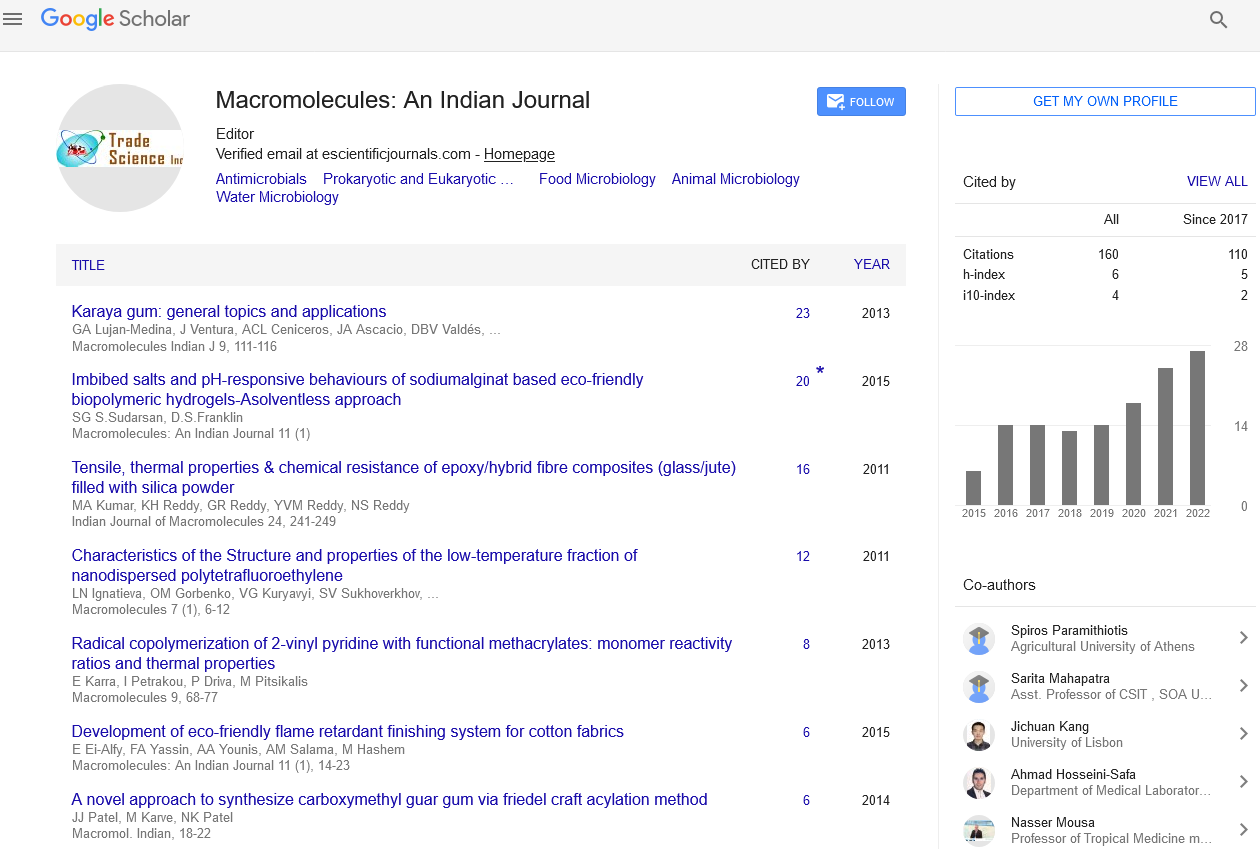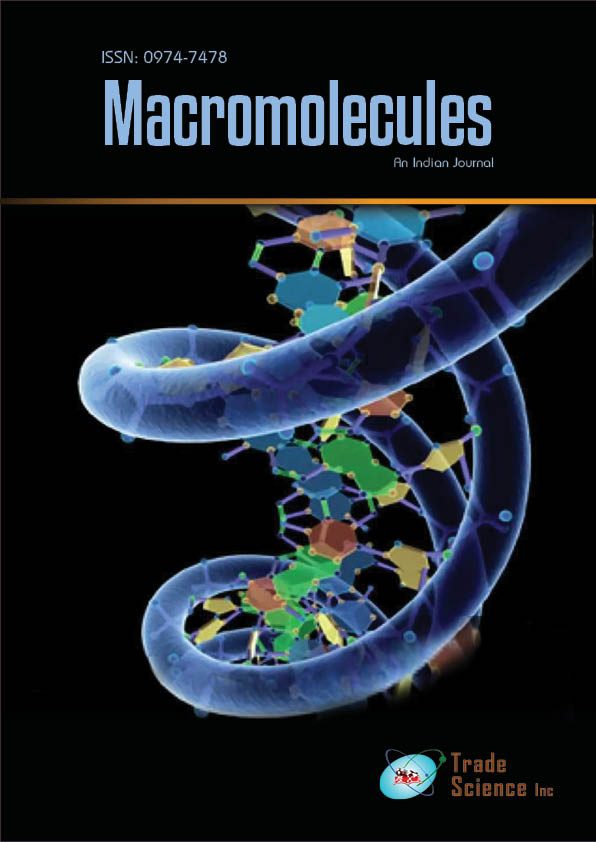Abstract
Polymer inclusion membrane: Effect of the chemical nature of the polymer and plasticizer on the metallic ions transference
Author(s): Zioui Djamila, Arous Omar, Amara Mourad, Kerdjoudj HacÃ?Â?Ã?Â?Ã?Â?Ã?¨neThe polymer inclusionmembranes used for the selective transport and separation of metal species has emerged in recent years. In this work, a development of a novel class of membrane for performing copper and zinc ions separation is reported. The membrane is polymerized from cellulose triacetate (CTA) and other polymers (P4VP or PMMA)with crown-ethers incorporated into the polymer as a metal ion carrier using tris ethyl hexyl phosphate or dioctylphtalate as plasticizers. Structural modifications promoted by the nature of the plasticizer and polymer that affectmetal ionmigration in polymer inclusionmembranes (PIMs) were evaluated using FTIR, Scanning ElectronMicroscopy(SEM),X-RayDiffraction (DRX) andThermogravimetric Analysis (TGA).An analysis of the effects of different polymers on copper (II) and zinc (II) transport using crown-ethers as carrier revealed differences in transport profiles that can be explained on the basis of the nature of polymer and plasticizer used. The transport flux and its efficiency depend on the chemical nature of the plasticizer. It can be perceived that TEHP (ç = 10.2mPa.s, år = 4.8) andDOP (ç = 76mPa.s, år < 10) produce the highest PIM transport of ions. The polarity and viscosity appear to be the main characteristics of themembrane plasticizer which affect the PIMtransport. Indeed, the plasticizer polarity influences the chemical potential of metal ion partitioning into the membrane, whereas increasing the viscosity of the plasticizer decreases the rate of transport, most likely by inhibiting the diffusion process.

